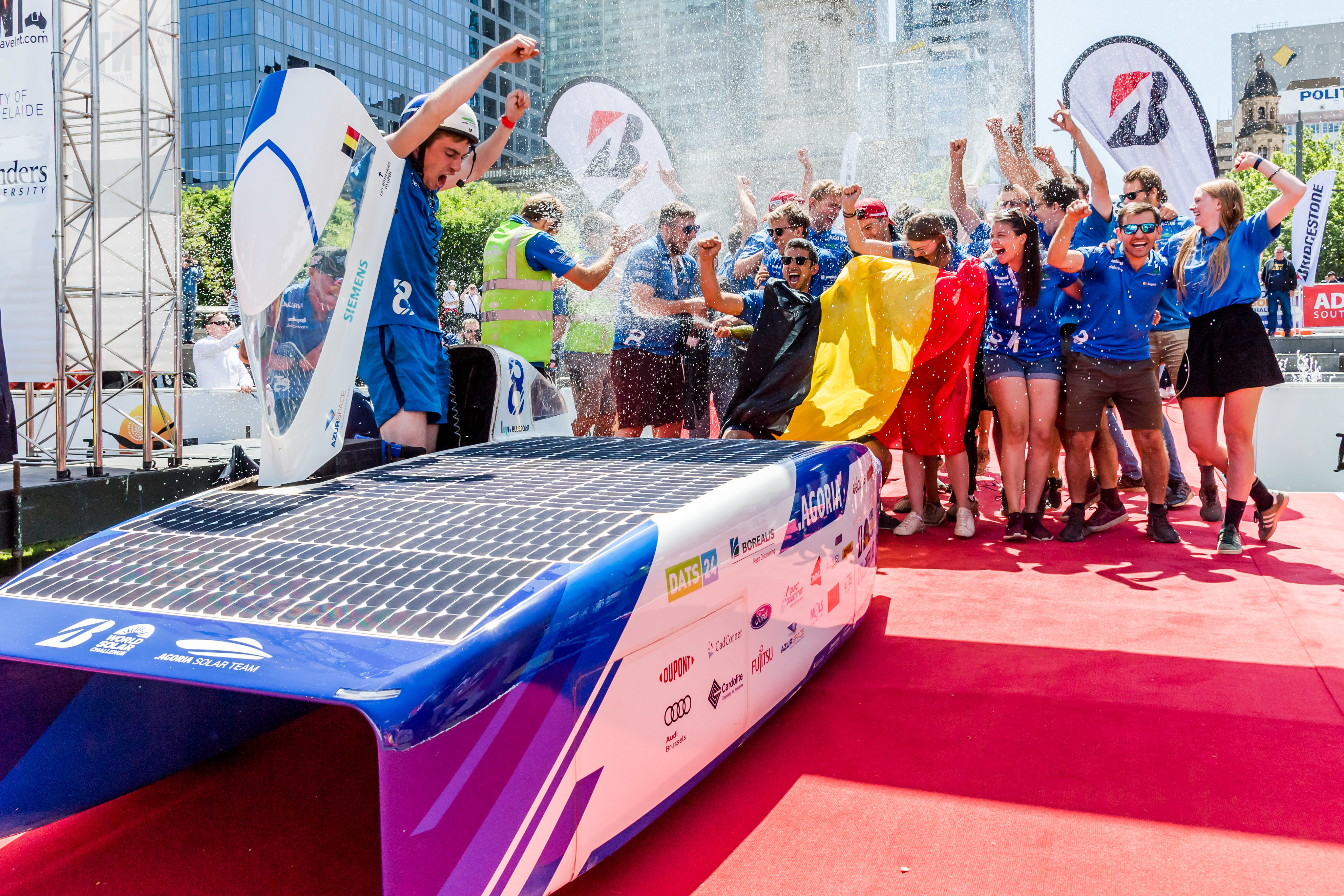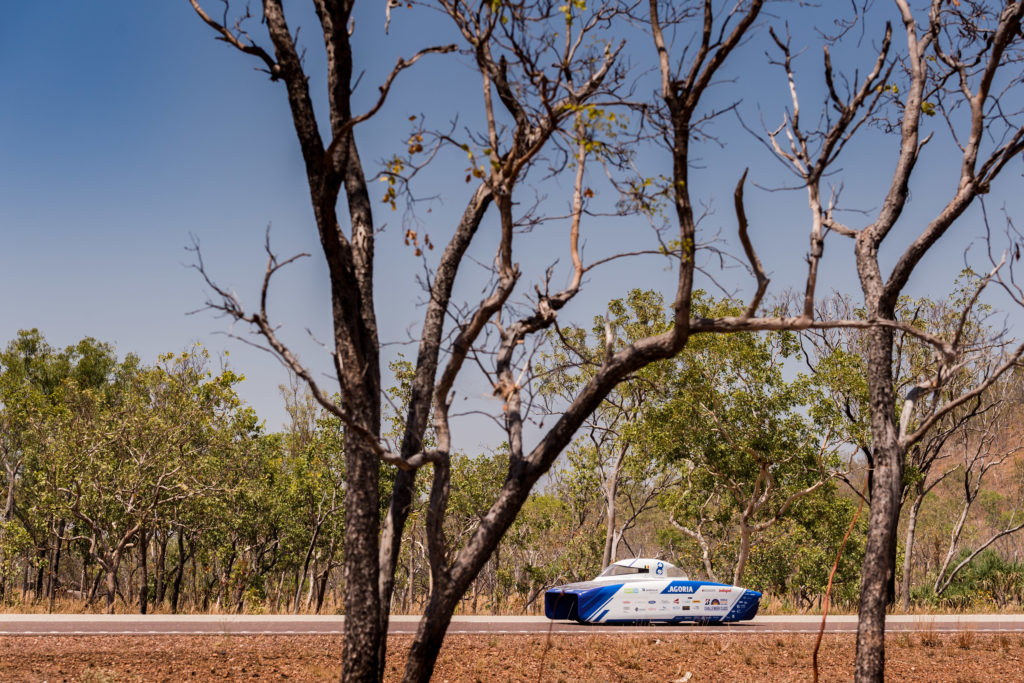BREAKING: Siemens solutions lead Agoria Solar Team to the win

They did it! Last night, or Down Under ‘today’, The Agoria Solar Team, a team of 19 KU Leuven students, won the Bridgestone World Solar Challenge 2019. It was a tight race in apocalyptic conditions. Yet neither the extreme heat, nor the strong side wind or even a sandstorm could prevent these heroes from crossing the finish line first. Their self-sufficient vehicle, called the BluePoint, even had 30% battery left; undoubtedly very useful energy to feed their party speakers and help their mobile phones survive the enormous stream of congratulation messages.
For the Belgians, it’s their first win in 8 attempts in this bi-annual event. Previous time, they became 3rd. They knew that, to do better, their vehicle required quite some design improvements. And that’s where Siemens Digital Industries Software has been instrumental. Let’s have a look how!
Top notch design
Siemens helped the team design their most lightweight structure ever. To do so, the aspirant engineers had to optimize all parts of the BluePoint, including the outer body, for both aerodynamics and strength, while taking into account manufacturing limitations. And it all had to happen in a race against the clock. Luckily, the Simcenter solutions portfolio by Siemens has all the necessary solutions lined up. This dramatically reduces the time it takes to go from the drawing board to results analysis.
Thanks to Simcenter, we could do way more iterations within the limited time frame we had, and come up with a top notch design.
Philip Gepts, Head of Mechanics

“To pursue improved energy efficiency, we had to start thinking of more complex shapes for all individual components, small or large,” says Robin Paenen, responsible for the BluePoint’s virtual assembly. “We had to find those that combine optimal aerodynamics with reliability.” In fact, the students were pushing the boundaries of production technologies like milling. Hence they started investigating other technologies, such as 3D printing, that allow more free form design, and require less material.
“Siemens NX software topology optimization and generative design solutions were essential during this research.”
Robin Paenen, Responsible Virtual Assembly
Agoria Solar Team balances performances
Of course, a lightweight structure with optimal aerodynamic shape and sufficient strength is crucial for success. But building a car is much more than that. Research had to be done in various other domains as well, including mechanisms, composites, low-voltage electronics and high-voltage electrics. In total, 5 teams were involved the the development of the BluePoint, each with a focus on their specialization, but at the same time, with one eye on the bigger picture. Also in this context, Siemens played a crucial role.
“Aerodynamics experts, for example, would like to build a very small car to decrease the volume that has to be pushed through the air. But at the same time, this volume also houses all mechanical components, such as the suspension,” explains Philip Gepts, head of mechanics. In Teamcenter from Siemens, the students can bring such aspects successfully together.
“Teamcenter was essential to virtually assemble all components. The software helped us to decrease our general clearance between moving parts, which directly resulted in a smaller car.”
Philip Gepts, Head of Mechanics
Siemens is very proud that our partnership helped the students accomplish this wonderful achievement. By now, they are most probably in the middle of a well-deserved party night in Adelaide. Unfortunately we can’t join. But from our desk, we lift our cup of coffee!



Comments
Comments are closed.